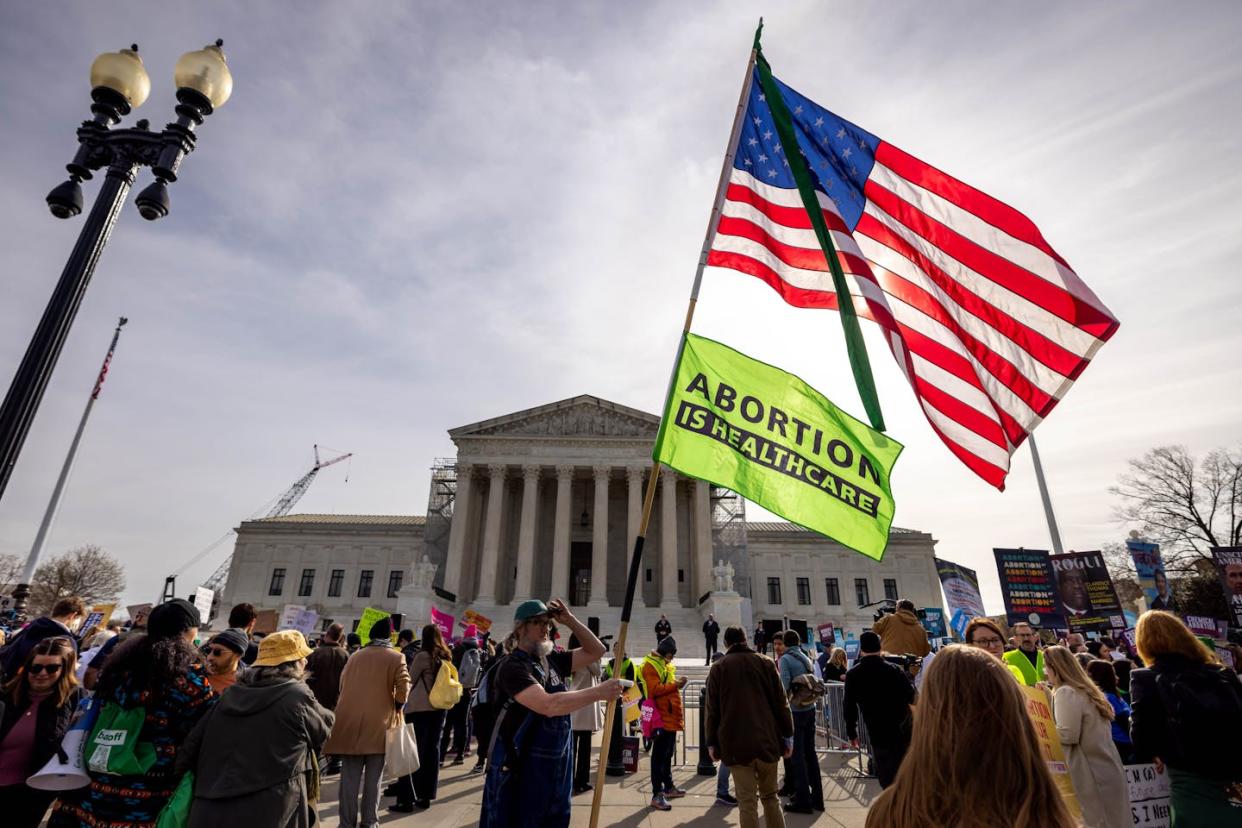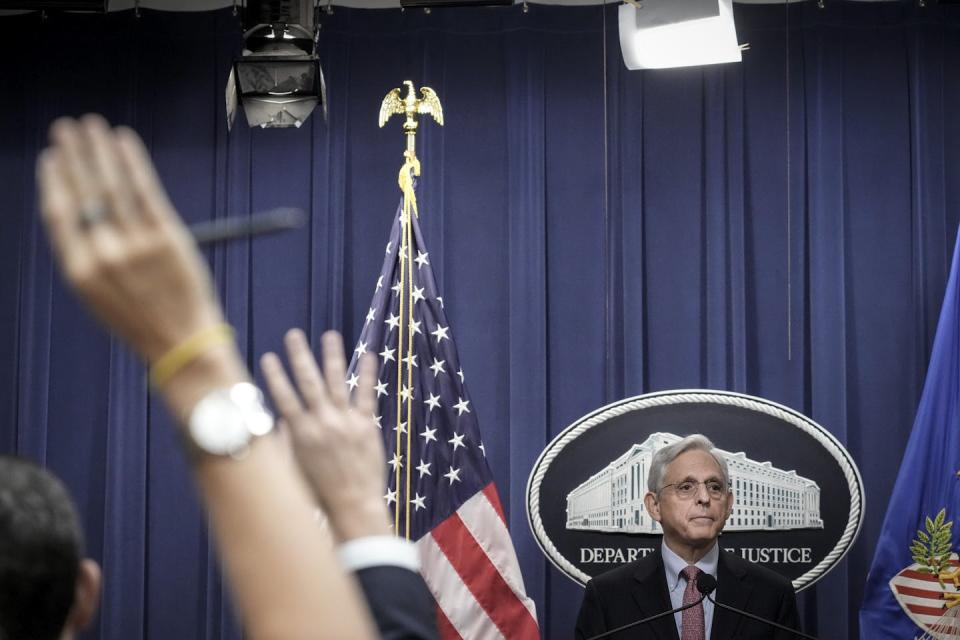Can states prevent doctors from giving emergency abortions, even if federal law requires them to do so? The Supreme Court will decide

Hospitals across the country have long operated under the same federal law that says they must treat and stabilize all patients when they have a medical emergency.
But in states that now ban abortions and have limited or no health exceptions to these restrictions, medical providers face an impossible situation. They can administer a medically necessary abortion and violate state law, potentially facing jail time and losing their licenses.
Or, they can decide not to provide the abortion and violate federal law, potentially resulting in the patient experiencing significant harm or even dying.
The Supreme Court heard oral arguments on this legal conflict on April 24, 2024, as it considered Moyle v. United States. This case centers on Emergency Medical Treatment and Labor Act, or EMTALA, a federal law that was designed to prevent hospital emergency rooms from refusing to treat patients who couldn’t pay.
The court is considering the relationship between EMTALA and Idaho’s law – a near total abortion ban which does not provide an exception to protect the pregnant person’s health, but has an exception when “necessary to prevent death”.
While the positions of some of the more conservative and more liberal justices seemed clear during oral arguments on April 24, it was harder to tell exactly where others, especially Justice Amy Coney Barrett and Chief Justice John Roberts, stood. It was notable that all of the women on the court, including Barrett, seemed more willing than their male colleagues to ask questions about the stark implications of Idaho’s law and the suffering it can impose on pregnant people.
EMTALA requires hospitals that receive Medicare funding to provide stabilizing care to all patients if their health – or, for pregnant people, “the health of the woman or her unborn child” – is in “serious jeopardy.”
Almost all hospitals in the country get Medicare funding, so this law applies to nearly all of them.
As scholars of reproductive justice, we believe that this case has implications that stretch well beyond abortion and into other thorny issues, like the legal status of a fetus and the ability of state lawmakers to dictate medical care.
The Supreme Court hears the case
During oral agruments, Elizabeth Prelogar, the U.S. solicitor general, emphasized that when abortion is the only way to stabilize a pregnant patient in an emergency, the pregnancy is usually not viable. In other words, the only option is to protect the health of the pregnant patient.
As Prelogar said, delaying care in the way that Idaho’s law would require “stacks tragedy upon tragedy.”
Justice Elena Kagan noted that in the few months since the Idaho abortion law was enacted, six pregnant women were airlifted to neighboring states for medical care. In contrast, only one woman was airlifted in 2021, before Idaho’s law was enacted.
Kagan pointed out that, “It can’t be the right standard of care to force somebody onto a helicopter.”
Indeed, Prelogar and an amicus brief – filed by patients who were denied stabilizing care during obstetrical emergencies – noted that abortion bans like Idaho’s lead to the very kind of patient dumping that EMTALA was enacted to prevent. When these women showed up needing emergency care, they were sent home and told to return when their health worsened, which left many of them with serious health complications.
The EMTALA case could also play an important role in the ongoing debate about whether fetuses are persons. Idaho, for example, argues that EMTALA requires the pregnant patient and “the unborn child” to be treated equally. Justice Samuel Alito seemed to take that argument seriously, saying on Wednesday that, “performing an abortion is antithetical to a duty” to the unborn child.
Another issue that came up during questioning by Barrett, Justice Neil Gorsuch, and Roberts was whether a hospital’s moral or religious objection to abortion allows it to deny abortions – even when EMTALA would require one. Prelogar conceded that both individual providers and hospitals could assert conscience objections.
Why the Supreme Court is considering EMTALA and Idaho’s abortion ban
Shortly after the Supreme Court overturned the federal right to get an abortion in June 2022 in Dobbs v. Jackson Women’s Health Organization, the U.S. Secretary of Health and Human Services reminded doctors that they must provide medical treatment if a pregnant person has an emergency medical condition. And if an abortion is the best “stabilizing treatment necessary” to help the pregnant person, they must offer it.
The letter emphasized that this federal requirement applies even if the physician is practicing in a state with an abortion ban that doesn’t include exceptions for the “life and health of the pregnant person.”

EMTALA: Enforcement questions
In August 2022, the U.S. sued Idaho, challenging its abortion ban.
The U.S. argued that Idaho’s law “directly conflicts with” EMTALA because it does not allow abortions to protect the patient’s health, not just to prevent death. Idaho argued that the U.S.‘ understanding of EMTALA effectively required all states to provide abortions, even if the procedures conflict with state law. The district court decided that EMTALA’s requirement of emergency medical care overrode any contrary state law.
The case was appealed to the U.S. 9th Circuit Court of Appeals, which ultimately agreed in October 2023, to consider the case. In the meantime, it left the state law unaffected.
In November 2023, Idaho House of Representatives Speaker Mike Moyle and other members of the Idaho legislature, asked the U.S. Supreme Court to let the Idaho ban remain in effect. Idaho also asked the Supreme Court to consider the case.
In January 2024, the Supreme Court agreed to consider whether EMTALA can override state abortion bans when the two conflict. It also allowed the Idaho law to remain in effect, even during obstetric emergencies, while the case is pending.
That means that no doctors in Idaho can perform an abortion in the case of a serious medical emergency, unless the pregnant person is on the verge of death.
What is at stake in EMTALA case
In the states where abortion bans conflict with EMTALA, patients may be denied appropriate emergency care when facing pregnancy complications like an ectopic pregnancy, in which the fertilized egg is growing outside of the uterus.
Depending on the stage of pregnancy, ectopic pregnancies are typically terminated with medication or surgery. Ectopic pregnancies are never viable. But if they are not ended, the fertilized egg would develop outside the uterus, causing great risk to the pregnant person’s life and fertility.
Other pregnancy complications that may require an abortion include separation of the placenta from the uterus, as well as preeclampsia, eclampsia and heart or kidney conditions.
If the Supreme Court accepts Idaho’s view that EMTALA requires the pregnant person and the “unborn child” to be treated equally, this could have various impacts across the nation. That is, EMTALA could be understood as requiring health care providers – even in states that protect access to abortion – to delay appropriate emergency treatment that could end a pregnancy in order to protect the “unborn child.”
Finally, if the Supreme Court decides that EMTALA does not override state law, the ruling could open the door for states to try to limit other kinds of emergency medical care, like HIV treatments or mental health care.
Of course, the court could decide that EMTALA prevails over state law, allowing for abortions to protect the pregnant person’s health from serious jeopardy. Given the court’s holding in Dobbs, however, which returned the question of abortion to the states, that remains questionable, in our view.
This story was updated from an earlier version published on April 23, 2024.
This article is republished from The Conversation, a nonprofit, independent news organization bringing you facts and trustworthy analysis to help you make sense of our complex world. It was written by: Naomi Cahn, University of Virginia and Sonia Suter, George Washington University
Read more:
The authors do not work for, consult, own shares in or receive funding from any company or organization that would benefit from this article, and have disclosed no relevant affiliations beyond their academic appointment.

